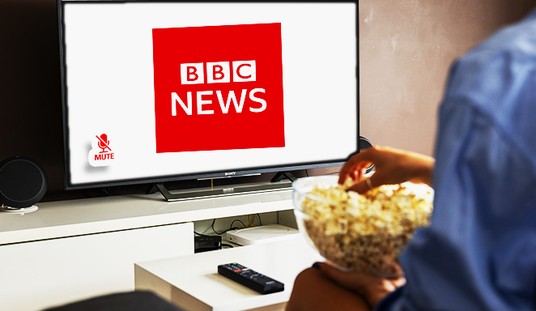The Democrats have more political power than they have had at any time since the presidency of LBJ. They control the presidency, have a filibuster-proof 60 seats in the Senate (counting independents Joe Lieberman and Bernie Sanders, who caucus with them), and have an 81-seat margin in the House.
The Democrats have the power to advance their agenda without a single Republican vote in Congress. But in a remarkably rapid political freefall, the Democrats, but one year after their great triumph in November 2008, are now facing an angry, pessimistic electorate. There is a strong anti-incumbent mood, and the list of endangered Democratic-held seats in the House and Senate grows each week.
The president’s approval numbers have dropped 20 points in nine months and only a third of the electorate think the country is now headed in the right direction. The Obama “hope and change message,” rapturously conveyed by an adoring lapdog media during the campaign and in the first few months of his presidency, looks as if it has the staying power of a one-night stand with the electorate. Unemployment, the single most important concern of Americans in nearly every survey, now exceeds 10%, despite assurances from the president and leaders in Congress that the $787 billion stimulus package would keep the unemployment rate from going higher than 8%.
As the unemployment rate rises and the number of unemployed grows (now over 15 million), the administration trots out the president and his spokespeople each month to provide ever higher and less believable numbers of jobs saved or created by the stimulus package.
A tiny portion of the stimulus money was directed at infrastructure spending, but it did not address the areas of the economy where unemployment was highest. In China, almost all the stimulus spending was on infrastructure investments, and their economy is booming again. The Obama stimulus included large dollops of cash directed to reward the left-wing special interest groups that had helped elect the Democrats. Much of that federal largess also went to support bloated state and local governments whose costs have been driven up by the municipal unions who control them and, significantly, are a key to electing Democrats.
It is not coincidental that Andy Stern (head of the Service Employees International Union (SEIU), an aggressive labor group that provided manpower and $60 million to the 2008 campaign) has had over 20 visits to the White House in nine months. Stern’s often raucously behaved troops are needed to do the community organizing for health care reform and other parts of the “progressive” agenda.
For General Stanley McChrystal, Obama’s appointed commander of the Afghanistan campaign, the president was able to find all of 20 minutes for a meeting on his way home from his failed bid for the Chicago Olympics. Three months after he started his review of the Afghanistan operation, the president is now calling for new options for his consideration.
Democrats are now in danger of losing Senate seats in Connecticut, Delaware, Nevada, Colorado, Arkansas, Illinois, and Pennsylvania. Republicans now lead (narrowly in some cases) in open seat races where a GOP member is retiring in Florida, Kentucky, Ohio, and New Hampshire — all considered highly vulnerable to a party switch to the Democrats a few months back. The Republican is leading even in Missouri, another open seat, where McCain managed a narrow victory in 2008.
After losing all the close Senate races in the 2006 and 2008 cycles (Missouri, Montana, Virginia, Alaska, Minnesota, and Oregon), a bit of luck could bring the GOP to near parity in the Senate after 2010.
In the House, Republicans hold only 177 seats, but Democrats hold 49 seats in districts won by John McCain in 2008. And George W. Bush won 255 House districts in 2004, a year in which he won the popular vote over John Kerry by 2.4%. At the moment, the GOP leads in the generic party ballot for Congress by 4% and 6% in the two most recent surveys. Obviously, a margin for the GOP in that range in 2010 would result in a large pickup in the House and a chance at winning back control.
The president and Democrats in Congress still seem hell-bent on advancing their agenda, particularly health care reform, a prospect that fails to earn 50% popular support in most surveys. There has never been as significant a piece of domestic legislation that has been pushed through almost entirely with the votes by members of only one party in Congress and as narrowly as occurred in the House vote on the health care reform bill. Momentum for any bill that approaches the grandiosity of the House version appears to be waning in the Senate. In the end, Democrats may be forced to choose between giving their assent to a very unpopular legislation or having it die along with their progressive dream of government control of health care.
The new deficit number for October, a startling $176 billion, combined with the $1.4 trillion deficit for 2009 and the $12 trillion accumulated public debt, has made many Americans wary of a new federal spending package of well over a trillion dollars in ten years for health care reform — especially since total spending for ObamaCare may go well higher than that.
In October, the federal government spent $311 billion and collected $135 billion in revenues. In other words, revenues covered 43% of spending and 57% needed to be borrowed. Lots of Americans may not be very good at math, but they know these numbers are unsustainable. It is no surprise, given the polling numbers, that there are now reports that the president will pivot and attempt to convince the American people in his January State of the Union address that he plans to focus on only two things: job creation and bringing the deficit down.
For a president who has spent more on new programs in nine months than Bill Clinton did in eight years, it might be a tough sell.
The initiatives of the administration and its Democratic allies — health care reform that will raise premiums for companies, new labor rules, cap and trade, abandoning free trade agreements — all are job killers, particularly for small business, the engine of job creation. The goodies have all gone to the public sector — government workers, teachers, community organizing groups — that live off the government dole.
One final issue may weigh down on the White House. The murder of 13 soldiers at Ft. Hood by a jihadist has unnerved many. While writers like Joe Klein are attempting to deny the obvious, most Americans understand who Hasan was and what he was trying to do. If the investigations that are upcoming in Congress, the intelligence agencies, and the Defense Department reveal that Hasan got a pass due to political correctness (tolerance for Islam of every shade), or that the various government agencies failed to communicate with each other (a repeat of pre-9/11 mistakes), it will not go down very well. The president has conducted a very public charm campaign to reach out to Muslims and Islamic nations. Did his administration get the message and as a result leave our soldiers at risk?
Republicans are finding it a lot easier to recruit candidates and raise money. They have a fierce wind at their back, a highly energized base of conservative voters, independents shifting to the GOP in large numbers, and two big wins in governor’s races (with a 20% shift away from the Democrats in one year in both Virginia and New Jersey). Add to that a strong anti-incumbent mood and storm clouds for the administration on all of its major policy fronts.
What a difference a year makes.









Join the conversation as a VIP Member